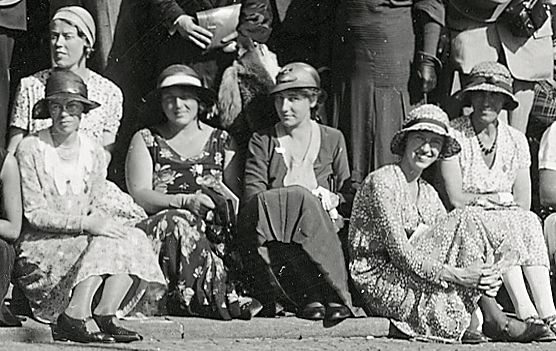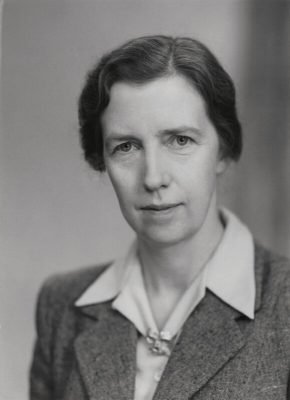What do the famous ‘butterfly effect’ and World War 2 have in common?
The British mathematician Dame Mary Cartwright. Born on 17 December in 1900, Cartwright was one of a handful of women to lead a successful and long career in mathematics in the early 20th century as a researcher, thinker, practitioner, university lecturer and administrator. Although it is now celebrated among her most important work, her early contribution to the hugely influential chaos theory took decades to be recognised and it hasn’t always been featured in relevant books.
In 1938 with Europe at the brink of war, the Radio Research Board of the British Government’s Department of Scientific and Industrial Research sent out a memorandum to the London Mathematical Society asking for help with equations related to radio engineering. Dr. Mary Cartwright was a mathematics lecturer at Girton College, Cambridge. She had already created Cartwright’s theorem solving a problem posed by J. E. Littlewood and was researching function theory. She responded to the memorandum’s call and took on the challenge of working with her more unfamiliar differential equations in collaboration with Littlewood.

Although they did not supply the answer in time, they mathematically explained the radio waves’ erratic behaviour redirecting the engineers’ attention who ultimately harnessed radar technology, while observing a totally unknown scientific field at the time: chaos theory. She later remarked on the divide between pure and applied Maths that ‘a number of major developments in pure Maths were first thought out in terms of real-world situations.’
Despite Cartwright and Littlewood jointly publishing their findings in 1945, it took 20 years for chaos theory to be introduced as a ‘new’ field credited to Edward Lorenz and popularised through the fascinating concept of the ‘butterfly effect’, where one tiny change in initial conditions can have unpredictable knock on effects. On top of her scientific war contributions, she also volunteered with the British Red Cross from 1940 to 1944.
It was at the end of the previous World War when she was 1 of only 5 women to enter St Hugh’s College, Oxford to study mathematics. In her first year in 1919, Cartwright often studied from copied notes, unable to enter the crowded classrooms from the men who had just returned from the First World War. She almost dropped out of Maths altogether when not awarded a first class that year. Luckily, she not only decided to stick with the subject, but she became the first woman to get the final degree with a first, a few years later.

Her achievements and ‘firsts’ for a woman mathematician kept piling up: the first woman mathematician to become a Fellow of the Royal Society; the first woman to serve at the Society’s Council and the first to receive its Sylvester Medal; the first woman president of the London Mathematical Society; the first woman to be part of the Cambridge University Court. It was this latest accomplishment that made her feel that she ‘had really arrived’ according to one of her former students, mathematician W.K Hayman.
Her life is inextricably linked with university life. She spent 68 years at Girton College at Cambridge moving from Research Fellow to Mistress, a position that on her own words allowed her to be ‘favored and preferred to men on many occasions’. Remembered as more of a good listener and hard worker with a constant presence on campus rather than a radical innovator, her mistress-ship (1949-1968), nevertheless, witnessed crucial changes related to women’s access to Cambridge: women finally started receiving full University degrees from 1948 (the last British university to do so after a poll rejected it in 1897) and the campaigning to increase entry spaces for women in the 1960s.
Her students described her as a ‘conscientious supervisor’ but ‘awe-inspiring’ figure despite her shyness and lack of small talk. The self-reserved Cartwight attributed the fact that she never became a professor to being a department head with limited number of research students. Today only 12% of mathematics professors are women. These low numbers of women mathematicians in higher academic positions point to cultural and social rather than individual reasons for this persistent underrepresentation.

Happy birthday Mary Cartwright! Your brilliant work lights up the long history of Maths and the changes yet to come.